Including Families of Children
with Special Needs
Neal-Schuman purchases fund advocacy, awareness, and accreditation programs for library professionals worldwide.

2014 by the American Library Association. Any claim of copyright is subject to applicable limitations and exceptions, such as rights of fair use and library copying pursuant to Sections 107 and 108 of the U.S. Copyright Act. No copyright is claimed for content in the public domain, such as works of the U.S. government.
Printed in the United States of America
18 17 16 15 14 5 4 3 2 1
Extensive effort has gone into ensuring the reliability of the information in this book; however, the publisher makes no warranty, express or implied, with respect to the material contained herein.
ISBNs: 978-1-55570-791-0 (paper); 978-1-55570-894-8 (PDF); 978-1-55570-895-5 (ePub); 978-1-55570-896-2 (Kindle).
Library of Congress Cataloging-in-Publication Data
Feinberg, Sandra, 1946
Including families of children with special needs : a how-to-do-it manual for librarians. Revised edition / Sandra Feinberg, Barbara Jordan, Kathleen Deerr, and Michelle Langa; revised by Carrie Scott Banks.
pages cm
Revised edition of: Including families of children with special needs / Sandra Feinberg... [et al.]. 1999.
Includes bibliographical references and index.
ISBN 978-1-55570-791-0 (alk. paper)
1. Libraries and children with disabilitiesUnited States. 2. Libraries and familiesUnited States. 3. Libraries and preschool childrenUnited States. I. Jordan, Barbara A. II. Deerr, Kathleen. III. Langa, Michelle A. IV. Banks, Carrie Scott. V. Including families of children with special needs. VI. Title.
Z711.92.H3F45 2014
2013019765 027.6630973dc23
 This paper meets the requirements of ANSI/NISO Z39.48-1992 (Permanence of Paper).
This paper meets the requirements of ANSI/NISO Z39.48-1992 (Permanence of Paper).
This book is dedicated to our families: Richie, Jake, and Teddy; Fred, Courtney, and Eric; Al, A. J., and David; Frank and Zach; and Katie and Paul, who did without us so much of the time during the creation of this work. Thanks for your support, understanding, and good humor.
It is also dedicated to Reggie and his mother, Sharon.C. B.
Preface
When Anthony and his mother first came into the library, I didnt have a clue how to communicate with them. They were both profoundly Deaf and did not speak, although both could read lips a bit. After some back and forth with a pen and some scrap paper, I was able to help them find the book Anthony needed for school. When they left, I was both relieved and embarrassed: relieved because they had gotten what they came for and embarrassed because it had been such a difficult process.
Realizing that Anthony would be back to return the book, and facing a long boring week of jury duty, I borrowed a book on American Sign Language (ASL). When they did come back, I shocked Mrs. C. by signing OK in response to a question and asking her name. That was all it took. They became regulars at my library and brought the rest of the Deaf community with them. Six months later, when I had learned a small but targeted ASL vocabulary, I found out the C. family had been to three other branches in our system before they got to my library. They kept coming back to ours because I had learned those first four signs. One year later, we hosted the National Theater of the Deaf and crammed over 100 people into the small, storefront library. Two years after that, I became the librarian in charge of The Childs Place for Children with Special Needs at the Brooklyn Public Library.
The C. familys visit was not my first insight into the limits of my library school education. In my previous neighborhood library, I was appalled that a 10-year-old with an intellectual disability had been told that he could not get a library card because he could not write his name. Parents asked me if I knew any good books for children with Down syndrome. I did not. Did I know any other parents of a child with Cri du chat syndrome? As it happened, I didbut not because it had been part of my formal training for librarianship.
It had, however, been part of my personal background. People with disabilities have always been a part of my life. My best friend in elementary school had cystic fibrosis. I had volunteered to tutor a child with a learning disability and interned at an inpatient pediatric psychiatric facility and as a special education teachers aide. One more piece of the puzzle fell into place when I was in high school; after years of being told by teachers that I was sloppy, lazy, unmotivated, and not living up to my potential, I was diagnosed with dyslexia and dysgraphia. For me, disability has always been natural.
In the first childrens room I worked in, I met a child who used a wheelchair and could not get into the library. One of the pages and I developed a system: I would speak with the patron outside the library, and the page would find the books and bring them out. It was an imperfect system. Later, at my next library, a father of a child with AIDS asked me to read to his son in the hospital. The hospital would not let me. It was with the hope of addressing situations like these and helping other librarians avoid the mistakes I made that I came to revise Including Families of Children with Special Needs. I bring to it my own beliefs that disability is natural, inclusion is a civil right, and Universal Design is the tool to get the job done.
Those of us working in public libraries, school library media centers, and hospital libraries are most concerned with serving children and youth with disabilities and their families because they are in our communities. In the 20082009 school year, 13 percent of public school students aged 6 to 21 years received special education services nationally. This translates into 6.5 million children in the United States (Institute of Education Sciences, 2011). In any given community, approximately one child out of every six will get speech therapy, go to counseling, go to the resource room, attend classes exclusively with other children with disabilities, be taught by a teacher in a hospital, or receive some other service that allows him or her to learn. Hundreds of thousands more require special accommodations, such as a quiet place to take a test or an electronic note taker. Note that the Institute of Education Sciences (2011) count did not include those children under the age of five who have a disability. Each child with a disability has a family that is also affected.
This revised edition of Including Families of Children with Special Needs is a step-by-step guide to serving those children and youth with disabilities as well as the brothers, sisters, parents, grandparents, and other people involved in their lives. By integrating the methods of educators, medical and psychological therapists, social workers, librarians, and parents we can enable children with disabilities and their families to make full use of the librarys resources. In the end, you will come away with an understanding of the needs of children and youth with disabilities and of those of their families and with the knowledge to meet those needs in the library. This book will give you an overview of what frameworks, tools, and materials are needed to successfully welcome children with disabilities into your library.
Part 1, Understanding Inclusion, lays the groundwork. We will look at the philosophy of inclusion and how it benefits children with and without disabilities, their families, and our libraries, as well as the legal requirement to serve all children. Next we look at the research in child development and supporting families. This section concludes by presenting the framework for developing inclusive library services: Multiple Intelligences theory and Universal Design.
Next page
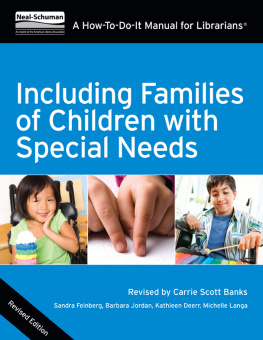
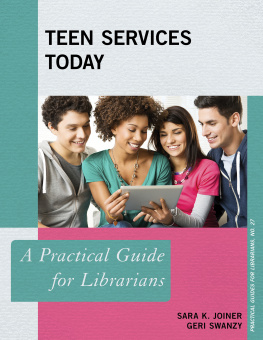



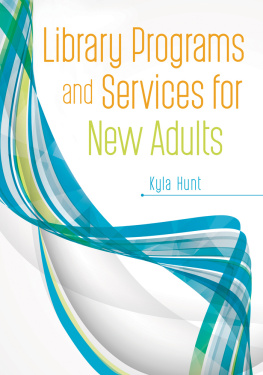
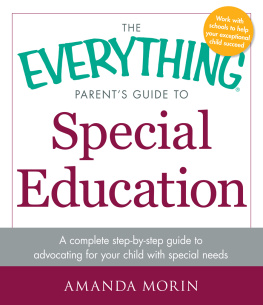
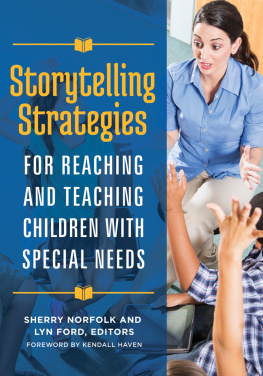
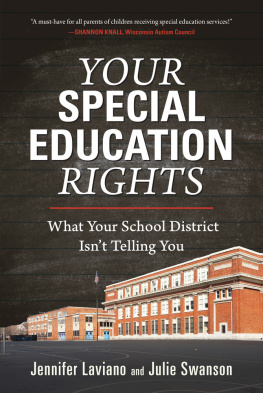

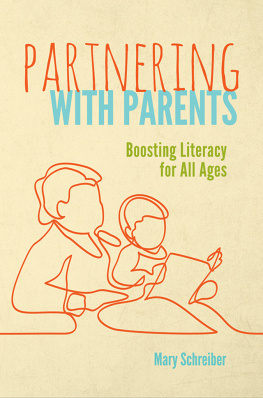

 This paper meets the requirements of ANSI/NISO Z39.48-1992 (Permanence of Paper).
This paper meets the requirements of ANSI/NISO Z39.48-1992 (Permanence of Paper).